Alec Soth speaks
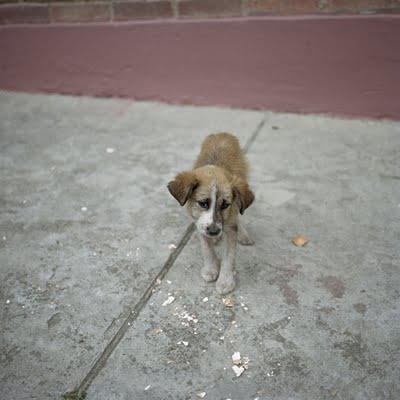
“I would say I’m photographing the space between us as much as I’m photographing the other person.” – Alec SothLast night, Minnesota photographer Alec Soth spoke at Massachusetts College of Art and Design in Boston, where his exhibit “Dog Days Bogotá” (pictured above) is on view from Sept. 9 to Nov. 28, 2009. The New England Journal of Aesthetic Research was there to hear him (and photograph the lousy portrait of him below). He spoke about his work, as well as how he’s grappling with technological advances that are rapidly changing photography. Below are excerpts from his talk.
 “I don’t know about you but I’m feeling the weight of all of this digital media. … I’d almost go as far as to say there’s a crisis in the medium, for me and I think other people are feeling it.”
“I don’t know about you but I’m feeling the weight of all of this digital media. … I’d almost go as far as to say there’s a crisis in the medium, for me and I think other people are feeling it.”William “Eggleston didn’t exactly invent this idea, but he did give it the perfect title [‘The Democratic Forest’]. It’s this idea that everything is available to be photographed. Which is great, except.”
“He would take thousands of pictures, just everything. I met Eggleston a number of years ago. I was kind of excited to meet him and try to figure out about his consciousness in making so many pictures and how he goes about selecting them, editing them, finding a sequence. It was an incredible visit, but I didn’t get any answers.”
“Facebook: 15 billion uploaded photos. At its busiest, 550,000 images each second being uploaded. So I’ve been struggling with that. How do I function as a photographer in that environment?”
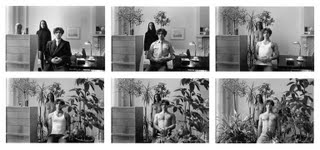 “In thinking about [as I call it] ‘The Democratic Jungle,’ my way out is the narrative machete, is storytelling. … In photography, we’ve had people like Duane Michals [pictured above], which for me is this sort of cornball representation. It’s more like comics than it is like photography. For me it wasn’t a solution. How do I use groups of pictures to tell a story? Of course there’s the great photojournalism [see W. Eugene Smith work below], but there’s something really dated about this form of storytelling. It doesn’t feel fresh anymore. The essential vehicle for storytelling in photography is the book, or is the slideshow, which I think has really been a truly undervalued form of storytelling.”
“In thinking about [as I call it] ‘The Democratic Jungle,’ my way out is the narrative machete, is storytelling. … In photography, we’ve had people like Duane Michals [pictured above], which for me is this sort of cornball representation. It’s more like comics than it is like photography. For me it wasn’t a solution. How do I use groups of pictures to tell a story? Of course there’s the great photojournalism [see W. Eugene Smith work below], but there’s something really dated about this form of storytelling. It doesn’t feel fresh anymore. The essential vehicle for storytelling in photography is the book, or is the slideshow, which I think has really been a truly undervalued form of storytelling.”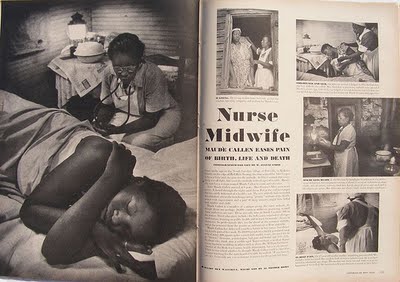
“So you think about your grandparents going on a vacation and they come back with their images. Those images are only interesting to the family. There’s a story in the slideshow, but not a true narrative. How do we create a true narrative in photography?”
“Narrative is the real art. It’s that thing when you want to turn the page, when you want to find out what happens. It’s so fantastic. Action, tension, the unraveling of plot.”
“Moving through space, connecting the dots, that for me is what photography is about.”
“When I was in college, I went to a lecture by Joel Sternfeld. A lot of you know he did the book ‘American Prospects,’ which is a book of social landscape photography, the American landscape. But for me what was important was it was road photography. And when he gave a lecture he showed this slide and pointed down to the parking lot there and he said that’s my car, that’s what I drove around in. And for me this whole thing came alive. Wow, I can have a life driving around in a car. It made the pictures alive. That idea of the process.”

“’92 I graduated [college]. You know, Cindy Sherman was the big thing and we were all doing that sort of stuff. It was encouraged. And I felt embarrassed to do color straight photography. Felt too like the teachers and all that. So I only did it in spring break. One spring break my girlfriend and I did a road trip down the Mississippi River from my home in Minneapolis to Memphis, Tennessee. They’re not great [photos]. … But it was fantastic. I felt like I really am living this life for this brief period of time.”
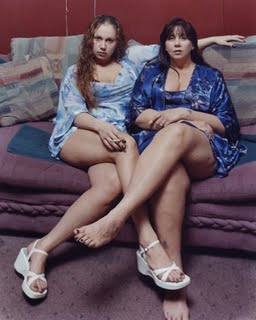 “But there was one thing really missing, which was pictures of other people. I was super shy. In school, I couldn’t raise my hand. Portfolio reviews where I’d have a breakdown. The idea of photographing other people just seemed impossible. But I knew it was this major weakness in the work. And it was what I responded to in photographs so much. After I got out of school I knew I had to teach myself how to do this. I started going to local parks and photographing kids. I knew I wasn’t doing a project, but I was practicing.”
“But there was one thing really missing, which was pictures of other people. I was super shy. In school, I couldn’t raise my hand. Portfolio reviews where I’d have a breakdown. The idea of photographing other people just seemed impossible. But I knew it was this major weakness in the work. And it was what I responded to in photographs so much. After I got out of school I knew I had to teach myself how to do this. I started going to local parks and photographing kids. I knew I wasn’t doing a project, but I was practicing.”“The beauty of being in Minnesota and being out of school and living not in New York is that you just get to try things and no one cares. You don’t have to worry about critiques on Monday and what you’re going to say. So I go to the state fair. I always loved the sheep for whatever reason. So I did a series of portraits of them. A lot of these sheep had ropes coming off of them. I saw a pilot at the airport on the telephone and made some sort of visual connection. I photographed them. Same sort of way, a series of these portraits. I photographed people with headphones. It was like this free-association thing. I photographed this choir, a number of choir singers. It was like this sheep choir that people were listening to on their headphones. Then the big finale was I went to a sleep research laboratory. Was like counting sheep coming in through all the wires into their heads. So I showed this work and not everyone got it.”
“And it was frustrating. Because one of the things I love about photography is its accessibility. The fact that so many people can respond to it. People did respond to the sheep pictures. They kind of forgot about all the other ones. And so it was unsuccessful, but I thought I was on to something with that sort of free association game.”
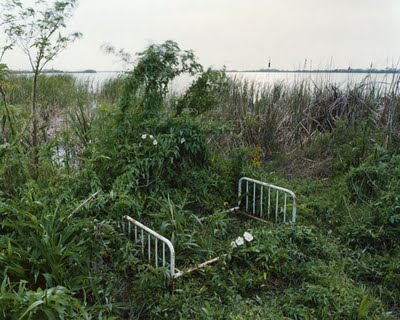
“I kept coming back to the Mississippi, kind of based on that early trip. … It turned into this ‘Sleeping by the Mississippi.’ But the thing about it is that it is not a book about the Mississippi River. It’s not a documentary. For me it’s about this kind of serendipitous wandering.”
“I’m fine with the work functioning like poetry, in that it’s open for interpretation. It’s not statement-driven work.”
“So I drive around. I love driving as a way of photographing. And I make these lists of things I’m looking for. In the Mississippi work it might be beds or airplanes, that kind of things. Sometimes obscure things that I never find. But it’s a way to get me looking. I can’t just randomly wander. I need something to go after.”
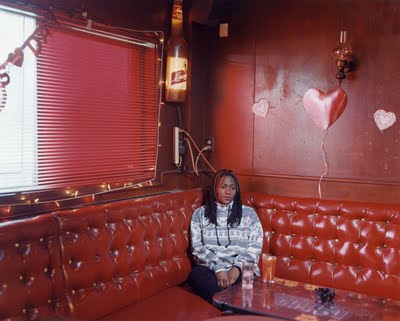
“A writer once followed me around and in the article he wrote he called me a used car salesman of a photographer. And it’s embarrassing. It’s this talking people into things. So there’s the camera. The big thing is this long process of me fiddling, focusing, doing all that stuff, and the subject waiting and waiting and waiting. And that, I think, really affects the whole portraiture experience. With a 35mm camera, boom, you’re in their face. It’s electricity. Here it’s that person in their separate space, thinking their internal thoughts, and me in my little space, playing around, thinking, staring at them, getting to look right in their eyeballs. So it’s two people in their own space, which I really love. Because I don’t think I’m photographing their soul or anything like that. It’s two separate people looking at each other. And in the final print, I think that comes through. There’s a feeling of distance. I would say I’m photographing the space between us as much as I’m photographing the other person.”
“I wanted a book [of the Mississippi photos]. I wanted to publish a book. But how am I going to have that happen without exhibitions and all the rest? So using ink jet stuff I made my own book and I had it bound. Ended up getting 25 copies of it. That got out in the world. And all sorts of good things happened. And then it got published.”

“After this I did ‘Dog Days Bogotá’ [pictured above]. … It was made while my wife and I adopted our daughter.”
“A guy in Australia set me this little video. He goes into the outback and works with kids, gives them a digital camera. So he sent me this thing. It was on YouTube. It had, I think, 16 hits on it. I was blown away. I just thought, ‘That’s better than most student work that I see.’ So simple. Just going around looking. I’ll give my daughter a digital camera. She’ll walk around the house the same way. Photography is so easy. The technology of it is so simple. … We have four years of education, two years of graduate school, and this kid is as good as all of us. How do we deal with that?”
“I always say that photography is an incredible hobby. … How do we deal with the fact that it’s such an easy medium? And vernacular photography is often as good as the photography we try to do. I often equate photography to like knitting. Both are fantastic hobbies. Why go beyond that? What’s the striving for?”
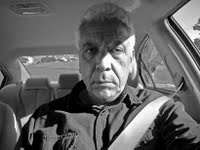 On photographer Gilles Peress’s web slideshow “A Sleep of Reason” (pictured at left): “He’s working incredibly hard on moving into the Internet, into digital technology. Which I just feel like this is the future obviously. And so when I visit, because I visit lots of schools, I look at work, and it’s always prints on a wall. It shouldn’t be. For me, it should be more books, but, more importantly, it should be more online activity. Now is the time. It’s an incredible moment in photojournalism and in photography to find a new way to connect these [narrative] dots.”
On photographer Gilles Peress’s web slideshow “A Sleep of Reason” (pictured at left): “He’s working incredibly hard on moving into the Internet, into digital technology. Which I just feel like this is the future obviously. And so when I visit, because I visit lots of schools, I look at work, and it’s always prints on a wall. It shouldn’t be. For me, it should be more books, but, more importantly, it should be more online activity. Now is the time. It’s an incredible moment in photojournalism and in photography to find a new way to connect these [narrative] dots.”“Part of what I think is so exciting about that is what he [Peress] said” – Peress’s quote: “I don’t care so much about “good photography”; I am gathering evidence for history” – “he doesn’t care about great photography, but it’s relentless documentation. And then assembled in this beautiful new experimental way. And I really feel like this is what we should be working on. Finding new forms, new media, new ways of telling stories, refreshing the medium. With this barrage of Flickr and all that, and it’s so easy to take a picture, my daughter can do it, the little outback kid can do it. Let’s spend all of our time with F-stops and this alternative processes. It’s great, but we should also be working on this.”
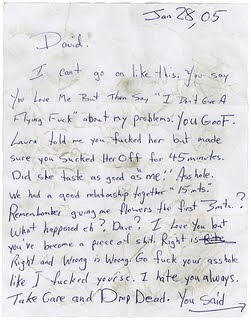 On his “Niagara” project: “I worked in a way sort of similar to ‘Sleeping by the Mississippi,’ where I was using the landscape as a metaphor. But in this case I was able to talk about love and romance and stuff like that. As always I was frustrated by the limitations of the medium. I wanted more and I wanted to hear people’s voices. So I started asking people I photographed if they had old love letters that they’d kept. Very often I didn’t use the pictures of the people, but I used their love letters.”
On his “Niagara” project: “I worked in a way sort of similar to ‘Sleeping by the Mississippi,’ where I was using the landscape as a metaphor. But in this case I was able to talk about love and romance and stuff like that. As always I was frustrated by the limitations of the medium. I wanted more and I wanted to hear people’s voices. So I started asking people I photographed if they had old love letters that they’d kept. Very often I didn’t use the pictures of the people, but I used their love letters.”“I was photographing these couples, but I was having a hard time making the pictures work. I wanted to energize the pictures in some way, make something else happen, shake it up. So I started doing the nude portraits for that reason. To see how people would hold each other or not hold each other.”
 “It was a very unhappy project. I was kind of unhappy making it. It was an unhappy place. And that definitely comes through in the pictures.”
“It was a very unhappy project. I was kind of unhappy making it. It was an unhappy place. And that definitely comes through in the pictures.”“There is this thing about this powerful force of water that people go to for romance and for suicide.”
“I wanted to sort of make it work like a love song. Lonely but beautiful. I thought of Roy Orbison a lot.”
“The [photographic] technology is so good and you can move on so quickly to these issues of content and connecting pictures together. I’m just more interested in that. But that’s just my own taste. I’m more interested in the sequence than the individual picture.”
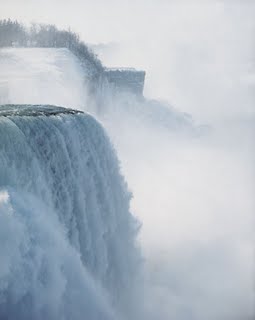 “I feel old, already, because of the speed of things. I felt Twitter was some sort of cut off point for me. Because, you know, I used to have a blog. I’m with it, you know. But Twitter, I can’t keep up. So there’s a part of me that thinks: okay, I’m already old. I’ll just keep working to try to make a great book, and leave it to you people. And then there’s part of me that wants to play in those [technology] waters. … And I think more of that’s to come. I’m just in the early stages of it. It’s uncharted territory. That’s what’s so exciting about it too.
“I feel old, already, because of the speed of things. I felt Twitter was some sort of cut off point for me. Because, you know, I used to have a blog. I’m with it, you know. But Twitter, I can’t keep up. So there’s a part of me that thinks: okay, I’m already old. I’ll just keep working to try to make a great book, and leave it to you people. And then there’s part of me that wants to play in those [technology] waters. … And I think more of that’s to come. I’m just in the early stages of it. It’s uncharted territory. That’s what’s so exciting about it too.Pictured from top to bottom: Alec Soth, “Untitled 06, Bogotá”; The New England Journal of Aesthetic Research, “Portrait of Alec Soth at MassArt,” Oct. 26, 2009; Duane Michals, “Paradise Regained,” 1968; W. Eugene Smith’s 1951 Life magazine photo essay “Nurse Midwife: Maude Callen Eases Pain of Birth, Life and Death”; Soth, “Helena, Arkansas,” 2002; Soth, “Mother and Daughter, Davenport, Iowa,” 2002; Soth, “Venice, Louisiana,” 2002; Soth, “Kym, Polish Palace, Minneapolis, Minnesota,” 2000; Soth, “Untitled 26, Bogotá”; Gilles Peress, “A Sleep of Reason,” 2008; Soth, “I can't go on like this,” 2005; Soth, “Michele and James,” 2004; Soth, “Falls 02,” 2005.






0 Comments:
Post a Comment
<< Home